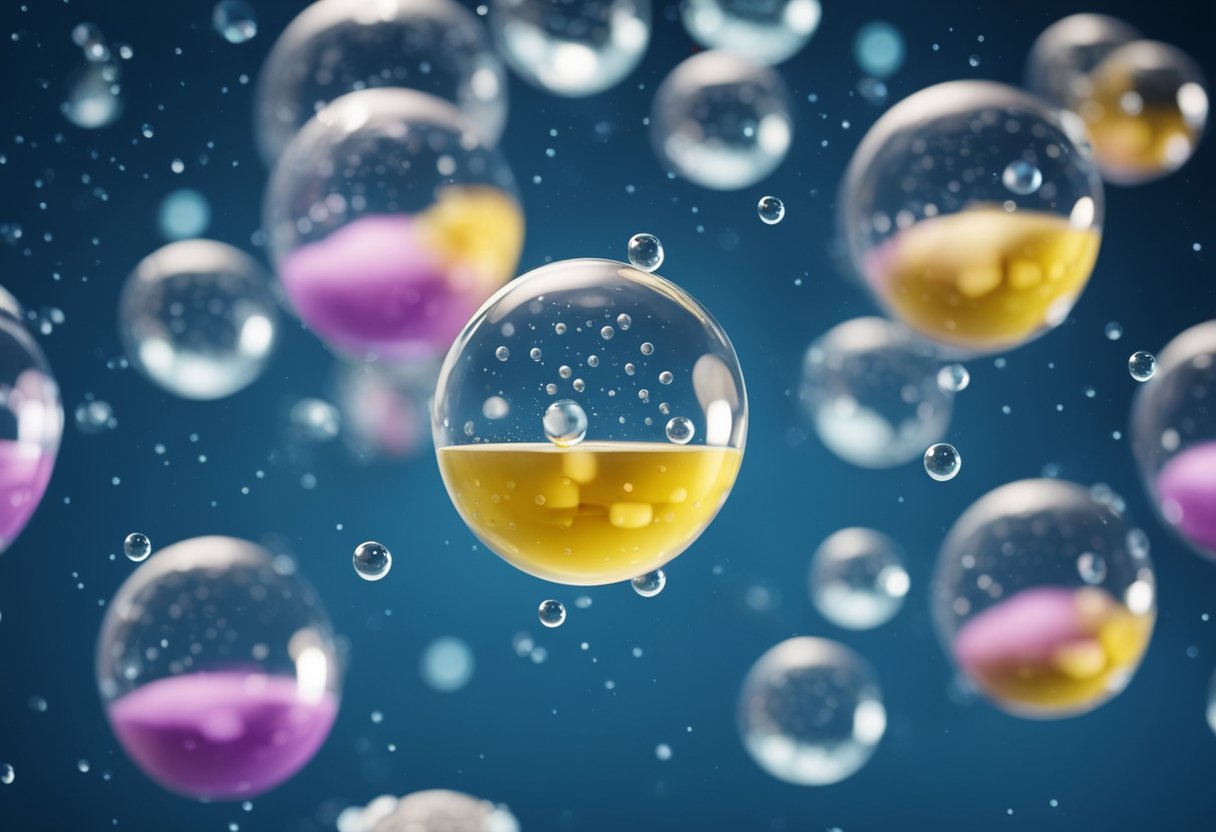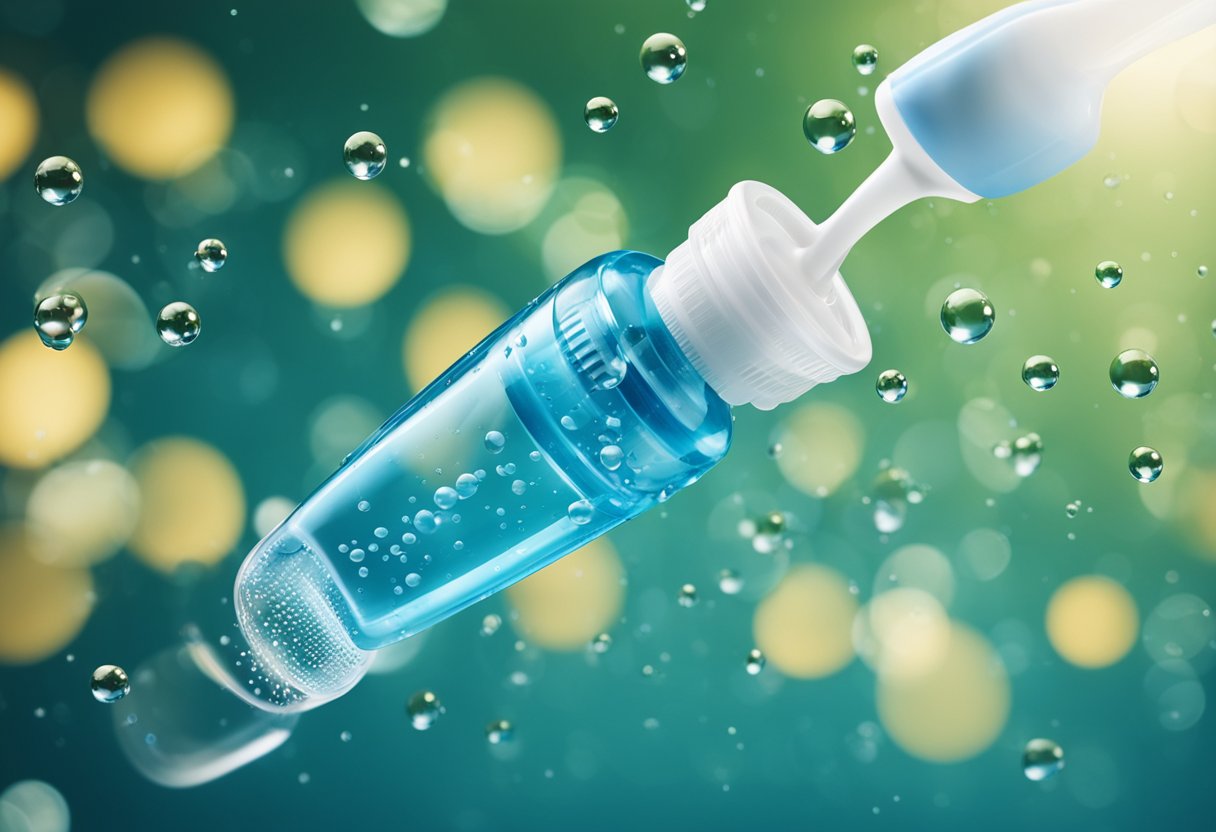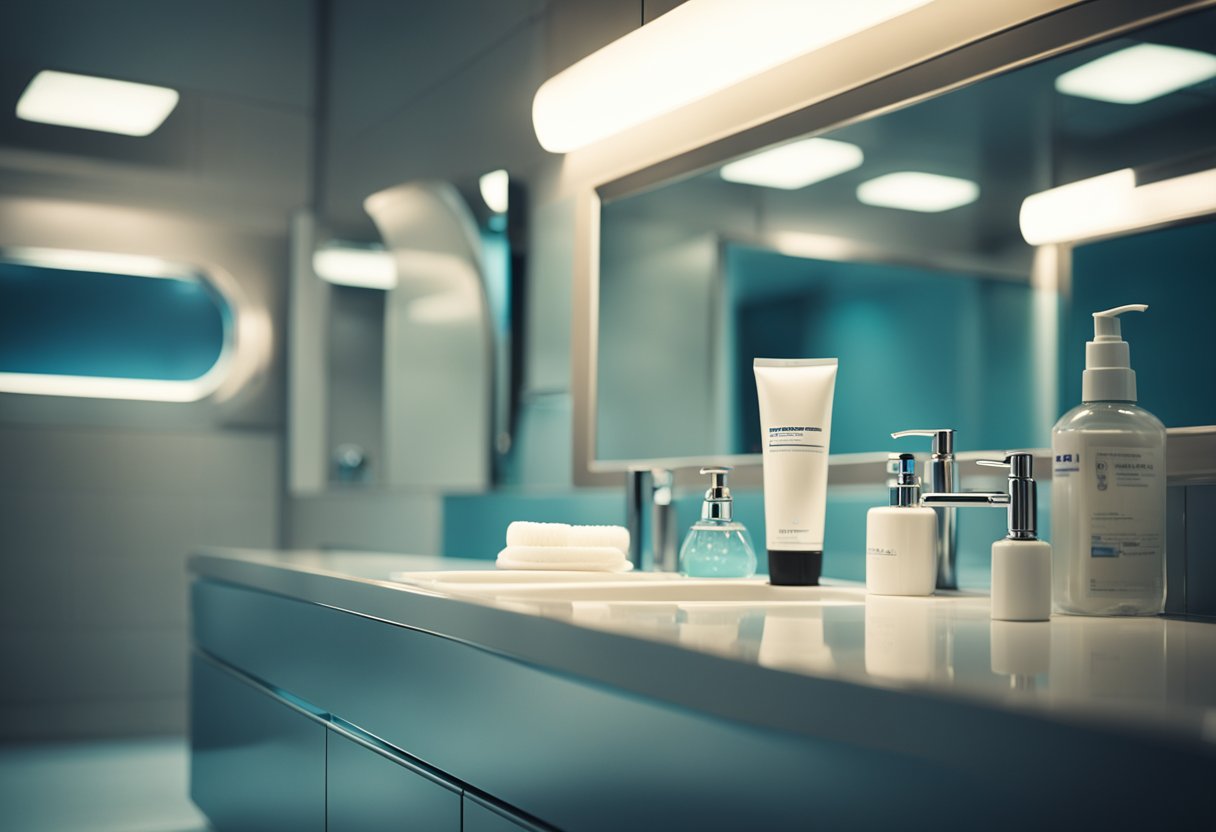
Maintaining personal hygiene in space presents unique challenges due to the absence of gravity. On Earth, our daily routines from showering to brushing teeth rely heavily on gravity, but in the microgravity environment of the International Space Station, astronauts must adapt to different methods. They use no-rinse cleaning solutions, special toothpaste that can be swallowed, and towels to scrub their bodies. Meanwhile, water is a precious commodity in orbit, so conservation techniques are crucial, and water usage is strictly controlled and recycled whenever possible.

Astronauts on space missions also face the issue of limited options for dealing with laundry and clothing. Without the gravity-dependent mechanisms of washing machines and dryers, astronauts typically wear their garments multiple times before disposing of them. The development of new textiles and materials could help to mitigate these issues, but for now, packing sufficient clothing for extended missions remains a logistical hurdle. Moreover, staying clean in space isn’t just a matter of comfort but is essential for the health and well-being of the astronauts, minimising the risk of infections and maintaining morale during long-duration missions.
From the earliest manned missions to the technology aboard Skylab, hygiene in space has been a focal point for ensuring the health and well-being of astronauts. We’ve seen remarkable adaptations to overcome the unique challenges posed by microgravity.
In the early days of space exploration, we faced significant challenges with maintaining personal hygiene. The absence of gravity meant that water and personal care products behaved differently, complicating simple tasks like washing. NASA astronauts had to rely on sponge baths using a minimal amount of water and no-rinse shampoo, as standard showers were non-existent in the cramped quarters of early spacecraft.
As our missions grew longer, the need for better hygiene solutions became evident. Technological advancements led to the creation of more efficient personal care items tailored for space use. These included specially designed toothbrushes and toothpaste that could be swallowed, and waterless soap that reduced the need for rinsing.
Our first space station, Skylab, marked a significant evolution in space hygiene. It was equipped with a shower, although still rudimentary by Earth standards, and astronauts used a chemical spray to cleanse themselves, which was more effective than the previous methods. Skylab’s advancements were pivotal in the ongoing research and development of space medicine and personal hygiene solutions.
We understand that maintaining personal hygiene in space is a task that requires specific training and adaptations due to the microgravity environment. Our astronauts undergo comprehensive training to ensure they can effectively manage their hygiene needs while on a mission.
Before we launch, it is crucial for us to become familiar with the unique equipment and techniques required for personal hygiene in space. At the NASA Johnson Space Center, we receive detailed guidance on the use of specialised hygiene products such as no-rinse shampoos and body washes. Habitability considerations, including the optimisation of space and conservation of water, inform our learning process.
Once we are aboard the space station, adherence to the hygiene protocols we’ve learnt is imperative. We use techniques like:
Moreover, we routinely shave and cut our hair using devices that are designed to trap the hair and prevent it from floating away.
Through consistent training, we ensure that our personal hygiene standards are upheld in space, contributing to the overall well-being and operational success of our missions.

In space, the absence of gravity presents unique challenges for personal hygiene. We are accustomed to certain health and sanitation standards that rely heavily on gravity’s presence.
Microgravity significantly alters how water and other liquids behave, which affects how astronauts wash and maintain cleanliness. Without the downward pull of gravity, water does not flow downwards as it does on Earth. Instead, it forms floating orbs. This makes traditional washing methods impractical. To maintain hygiene in space, we utilise things like no-rinse soaps and special shampoos that can be used without running water.
Weightlessness complicates even the simplest hygiene tasks, such as going to the toilet. Waste management systems on spacecraft must be able to operate without the help of gravity, requiring the use of suction and airflow to contain and process bodily excretions. The tools and products we use for everyday grooming – from toothbrushes to nail clippers – must all be carefully secured and used to prevent loose items from causing complications in the spacecraft’s delicate environment.
In space, every drop of water is precious, and our systems aboard the International Space Station reflect that principle. We’ve developed advanced methods to ensure not a single drop is wasted. Through meticulous wastewater recycling and drinking water purification processes, we’ve also set strict limits for hygiene water use to maximise our water conservation efforts.
Recycling Efforts:
To make the most of every drop, we’ve implemented a state-of-the-art wastewater recycling system. All the wastewater aboard, including urine and water from handwashing, is purified and transformed back into potable water.
Purification Standards:
Our drinking water purification process is rigorously controlled to ensure safety and quality. We use a combination of filtration and chemical treatments to achieve this.
Usage Guidelines:
To conserve resources, we’ve established clear limits on hygiene water usage that are akin to restrictions one might encounter when camping in extreme environments.
Through these measures, we sustain our water resources and enable prolonged missions in space, which is crucial for our ongoing exploration and innovative partnerships like those fostering water-recycling showers for future space voyages. Our protocols on the ISS serve as a blueprint for efficient water use, which is not only vital for space exploration but also has the potential to inform water conservation strategies on Earth.
We understand that maintaining personal hygiene in space is uniquely challenging due to the microgravity environment. Our daily routines undergo significant adjustments to accommodate for the absence of gravity, from washing to oral care. The following subsections detail how we manage cleanliness while orbiting Earth.
In the confined quarters of a spacecraft, we replace traditional showers with no-rinse body washes and specially designed wet towels. Soap and shampoo are used sparingly, often in their no-rinse form to avoid excess water floating around. For instance, we apply a rinseless shampoo directly to the scalp, massage it in, and then dry it off with a towel, ensuring hair hygiene without running water.
Our approach to dental care in space involves the same principles as on Earth: toothbrushing with toothpaste and flossing. However, we spit into a washcloth rather than a sink to avoid splattering toothpaste in the weightless environment. Even in space, maintaining oral hygiene is crucial for our health on long-term missions.
Managing hair growth poses its challenges; we cut our hair using clippers attached to a vacuum device to collect the trimmings. As for nails, we prefer to trim them carefully over a waste container or near a vent that sucks in air, trapping the clippings and preventing them from floating away and becoming a nuisance or hazard.
In the unique environment of space, we implement advanced sanitation systems to manage waste and ensure the cleanliness of astronauts. These systems are crucial for long-duration missions, where hygiene plays a vital role in maintaining both physical and mental well-being.
The challenge of solid waste disposal in space is met with innovative Waste Management Systems. Solid waste is compacted and stored securely until it can be returned to Earth or disposed of. Our efforts are devoted to the development of processes that will not only contain waste but also recycle it back into the space vessel’s ecosystem. For instance, materials like plastics could be repurposed using onboard 3D printers.
In terms of managing urine, the current technique involves collection and subsequent purification, turning urine into drinkable water. This not only conserves water but also reduces the weight of transport vessels, as less water needs to be launched from Earth. The recycling systems are meticulously designed to ensure bacteria growth is controlled and does not pose a risk to the health of the crew.
Our attention to toilet technologies reflects the complexities of living in microgravity. We have developed toilets that use a combination of airflow and suction to handle human excreta. This technology operates differently from Earth-bound toilets, requiring careful design to maintain hygiene levels and prevent the spread of contaminants. Refined mechanisms seal waste and bacteria, avoiding any contact with the crew. We’re also exploring options that would transform waste into fuel or other resources, maximising efficiency.
These sanitation solutions must operate reliably in a zero-gravity environment, making them incredibly sophisticated pieces of technology.
By ensuring the management of waste products in space is handled with the utmost efficiency and safety, we contribute to the success of current and future missions, whether they’re for research or part of the burgeoning space tourism industry, as celebrated by sites like SpaceVoyageVentures.com.

In addressing the unique challenges of personal hygiene in space, we turn our attention to the pressing matter of clothing maintenance and the latest innovative strides in space apparel.
Maintaining functional and clean suits and garments aboard spacecraft is essential for astronaut health and comfort. We wear our clothes for significantly longer durations in space compared to Earth, due to the absence of conventional laundry facilities on spacecraft like the International Space Station (ISS). Traditional washing machines are not feasible here because water is scarce and preservation of this resource is critical. Consequently, we have developed strategies to maintain hygiene with these limitations, including wearing clothes for as long as possible before disposal.
The quest for sustainable clothing options in space has led to forward-thinking approaches in textile design and laundry solutions. We have collaborated with companies to develop materials that are more resistant to odours and bacteria and can be worn for longer periods. For example, NASA’s endeavour to repurpose clothing in space presents a fascinating insight into how we could improve efficiency in garment usage. Another exciting development includes the partnership with brands to create laundry detergents specifically formulated for the conditions in space, marking a significant step towards the introduction of off-Earth laundry systems. These innovations are not only expected to enhance life in space but also hold promise for resource-constrained environments on Earth.
In space, the absence of Earth’s protective atmosphere exposes astronauts to unique health risks. We take significant measures to safeguard their health, focusing on two critical areas: mitigating the damaging effects of space radiation and preventing cross-contamination that can compromise the cleanliness of the spacecraft and the health of its occupants.
Space radiation is a significant concern for astronaut health due to its potential to damage cells and DNA, which can increase the risk of cancer and other diseases. It can also impact adaptive immunity, which is the body’s capability to fight off infections. To protect against these hazards, spacecraft are designed with shielding, and mission durations are carefully planned. Additionally, we monitor astronaut health closely to detect any changes in their immune function.
To prevent cross-contamination in the confined quarters of a space vehicle, strict hygiene protocols are in place. Astronauts follow a detailed regimen for personal hygiene in space, including the use of air filtration systems to keep the environment clean and free of potential contaminants. Moreover, appropriate waste management systems are used to handle human waste to ensure it does not affect the onboard environment.
Maintaining personal hygiene in space is not only vital for physical health but also has profound implications for psychological well-being. We use our carefully established routines to support mental health and create a semblance of normality in the extraordinary environment of space.
The maintenance of personal hygiene in space is intrinsically linked to an astronaut’s mental health. The very act of engaging in hygiene practices offers a sense of normalcy and control in an environment that is inherently alien. Astronauts on the International Space Station must adapt to the absence of gravity, which could otherwise lead to a range of psychological stresses. Consequently, the methodologies adopted for self-care are designed to mitigate these stresses, reinforcing mental resilience and stable psychological states during long-term missions.
Establishing a routine aboard a spacecraft is paramount, as it parallels life on Earth and helps in structuring an astronaut’s day, thus preserving a sense of time and purpose. These routines often involve elaborate hygiene practices, adjusted for microgravity, that astronauts need to adhere to daily. Adopting such habits contributes to the overall habitability of the spacecraft, making it a more conducive environment for humans to live and work in. For individuals preparing for future space travel through platforms like SpaceVoyageVentures.com, understanding and preparing for the rigidity of such routines will be essential to ensure not just physiological, but also psychological health.
As we prepare for longer missions in space, maintaining personal hygiene becomes a complex challenge requiring innovative solutions.
Long-duration spaceflight presents unique obstacles for hygiene due to factors like microgravity and limited water supply. On Earth, gravity aids in the management of fluids and waste, whereas in space, the absence of gravity means that these fluids can float freely, which can lead to contamination if not carefully managed.
Innovation in hygiene technology is critical as we move towards extended stays on the Moon or Mars. The impact of long-duration spaceflight on the human body is being studied to develop systems that ensure astronauts maintain their hygiene without using large quantities of water or producing excess waste.
Technological advancements offer a range of potential solutions. For instance, no-rinse body washes and shampoos are currently used on the International Space Station, and further development in these areas could provide more efficient ways to bathe without water.
Innovative laundering technologies are also in development; these systems aim to clean clothing using minimal resources. For example, scientists are exploring antibacterial fabrics that reduce the need for frequent washing.
Our understanding of space hygiene is evolving with every mission. As we expand our presence in space through ventures like those documented on SpaceVoyageVentures.com, our approach to maintaining cleanliness in a space environment will undoubtedly refine, ensuring the well-being of astronauts on future spaceflights.

In our examination of personal hygiene in space, we have observed the innovative adaptations necessitated by the unique conditions of microgravity. Sustainability is a key consideration; water conservation is paramount, repurposing systems ensure nothing goes to waste, and hygiene practices are tailored to reduce resource consumption.
Our recommendations for the future of space hygiene revolve around continuous improvement. We anticipate advances in technology will streamline existing hygiene protocols and introduce even more efficacious practices. These improvements will be crucial for longer missions, such as potential Mars expeditions or as space tourism, documented on portals like SpaceVoyageVentures.com, becomes more prevalent.
We see an impending need for hygiene systems that are not only sustainable but also comfortable for a variety of users. This includes tourists who may not have the rigorous training of professional astronauts. Ultimately, our efforts ensure the health and well-being of all who travel or will travel beyond Earth’s atmosphere.
Future explorations will demand that we remain proactive in our approach to hygiene in space. As we prepare for an era where space travel becomes more routine, optimising these methods will be vital. The challenge is formidable, but with concerted effort and innovative spirit, the solutions within our grasp promise to redefine cleanliness in the cosmos.
List of key aspects to further improve:
In this section, we address some common queries about how astronauts keep up with their hygiene and health while living in an environment where traditional methods aren’t possible due to microgravity.
Astronauts use no-rinse bathing wipes and rinseless shampoos to cleanse themselves. They rely on these specially designed products because water behaves differently in space, making regular showers impractical.
To maintain oral hygiene, astronauts use toothpaste and a toothbrush just like on Earth. The difference is they swallow the toothpaste or spit it into a towel since they cannot rinse and spit in zero gravity.
A spacecraft is equipped with specially adapted toilets that use air flow instead of water to contain the waste. Solid waste is compacted and stored for disposal back on Earth, while liquid waste is often expelled into space.
Hand hygiene is maintained through the use of no-rinse, antibacterial handwash. This helps astronauts keep their hands clean without the need for running water, ensuring germs are kept at bay in the confined spaces of the ISS.
Astronauts adhere to a strict exercise routine consisting of at least two hours a day on resistance machines and cardio equipment. This helps them combat muscle atrophy and bone density loss caused by microgravity.
The absence of gravity means water doesn’t flow or drain as it does on Earth, so traditional bathing isn’t feasible. Astronauts use rinseless soap and water solutions absorbed by towels to clean themselves, striving to manage hygiene without the amenities found on Earth.